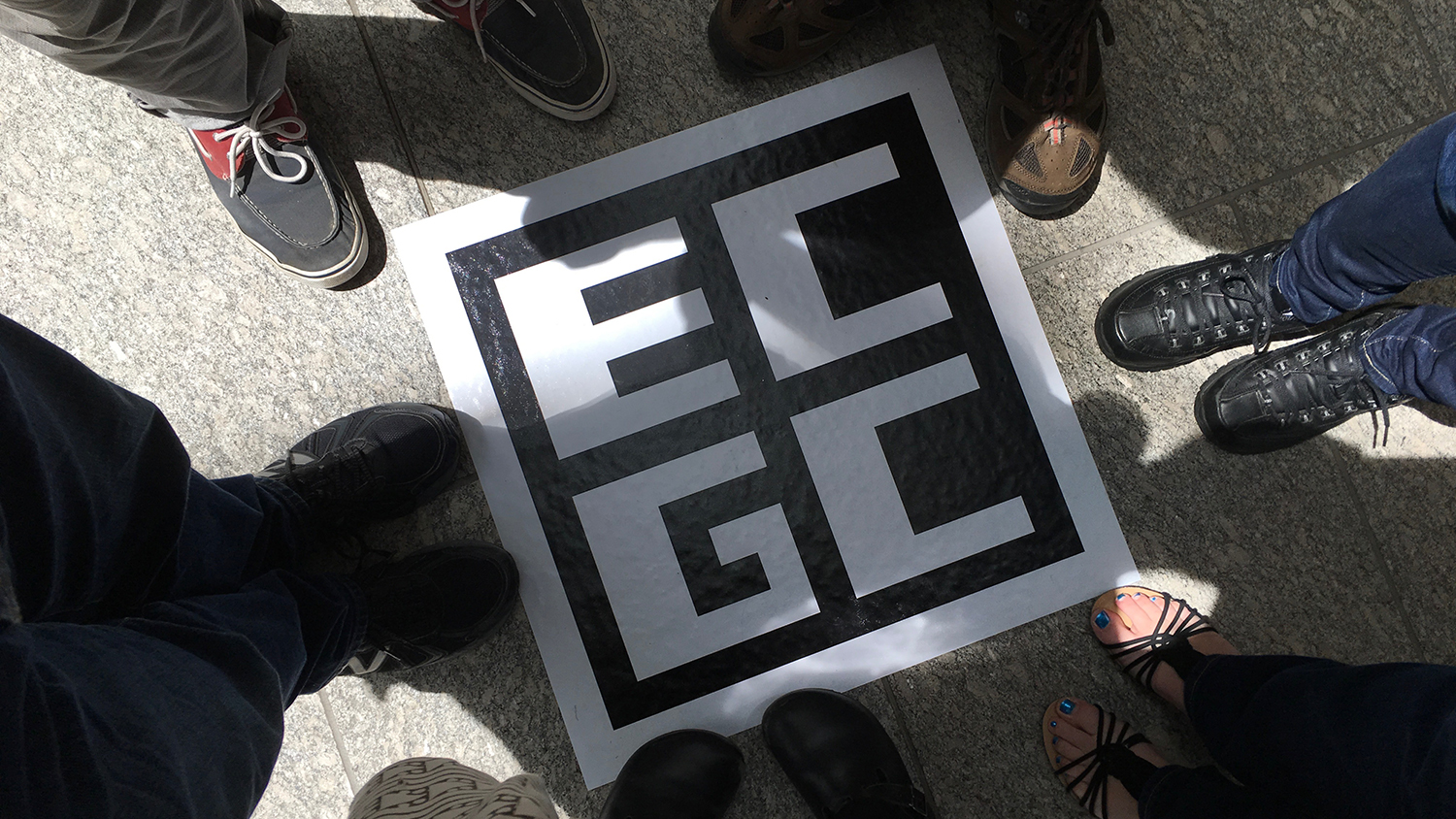Token Takeaways from the East Coast Game Conference

In its 11th year, the East Coast Game Conference (ECGC) brought together industry professionals to network and share growing trends and new technologies. ECGC is the largest gathering of video game professionals on the east coast.
Members of DELTA’s New Media Development and Instructional Design teams attended the conference held April 16-18 at the Raleigh Convention Center.
Cathi Dunnagan, Ben Huckaby, Jakia Salam, Rebecca Sanchez, David Tredwell, Stephen Waddell and Andrew Wiedner shared some of their key takeaways from notable sessions and exhibits as well as tokens of advice from the conference.
Notable Sessions
Immersive Active Shooter Response Training
Vern Shurtz, Co-founder and lead developer of Stratus Technology Group
Developed by veterans, this virtual reality experience aims to prepare educators for an active shooter event.
Trainers are immersed in a virtual school environment and they are trained in the preparations, procedures and actions that they will perform virtually along with various scenarios to enhance their knowledge and skills.
The virtual reality training app uses Oculus and Vive VR systems and is supplemented with a companion mobile app using Apples AR Kit and Androids AR Core, according to the session description.
The training is not from a first-person perspective but gives the educator a broad view of the scenario to help them prepare.
The app is published to a variety of distribution methods and devices using Unity and Vuforia.
The Untapped Potential of VR to Impact Health
Bradley Turner, Health Impact Studios
According to the session description, VR can improve health by enhancing understanding of human biology, building problem-solving skills, and effecting change in behavior.
This session covered six examples and five key elements to creating a VR game to impact health. Participants engaged in a demo of a VR exploration of the human brain.
“VR development takes a lot of time, so it is worth it to have something developed that does not change often. The human brain is something that will be the same always.”
Salam found the session particularly interesting because of how it could be translated to DELTA’s work.
“This could be used in biology, chemistry, physics, engineering and medical courses,” Salam said. “To me, what we do at NC State is always ahead of the curve.”
Axe One Exhibit
Derek Ham, Assistant Professor, NC State College of Design
Instructional Designer Cathi Dunnagan shared her enthusiasm for Ham’s “Axe One” VR experience.
“The combination of dual, multi-use handhelds and a chest-mounted haptic device made for a VERY exciting, immersive experience battling ever-increasing numbers of sword-wielding knights and shielding myself from their arrows. Haptics for physical impacts definitely take VR to the next level! Intuitive, elegant design!” she added.
Tokens of Advice
… from Cathi Dunnagan
- “Do playfully,” Lindsay Grace
- Interaction should not be difficult; only the game should be difficult!
- Engaging gameplay is educational! Can you spot the fake news articles?
- Play Factitious, http://factitious.augamestudio.com
- “Tinder for News”
- Swipe right for REAL.
- Swipe left for FAKE.
- Real news in a game (quiz+playful mechanics).
- 1.6 million articles played in 3 days July 3-6, 2017!
- Each play is a human eye on an article-detecting what is perceived as fake news.
… from Ben Huckaby
- When designing something where choices can be made, make sure the choices matter and contribute toward your goals and target outcomes. Having a group of answers that are all “right” and “wrong” to some degree is much more interesting (and requires more thinking and analysis on the users part) than choices that are clearly correct or not.
- When creating animations it is important to consider follow through and overlapping action if you want to have animations that are clearly read as smooth and natural. Essentially this is getting into animating objects as if physics actually applied to them (or even exaggerating this if the style or purpose calls for it).
- There are AI tools available now that don’t require a wealth of knowledge in developing neural networks or AI systems. For example, Unity has ML Agents that can be trained via machine learning to become AI actors in your Unity application.
… from Jakia Salam
- VR development requires a lot of time, resources and effort. If developed properly this can be a very powerful teaching tool. When developing something in VR, make sure it aligns with the learning goals and plan out the “VR map” with all the navigation, media elements and interactions ahead of time.
- It is good to have a user guide and alternate option while designing something in VR — not everyone is super comfortable with it yet!
- Develop a prototype, test and evaluate, and make a decision based on that which direction you should go.
… from Rebecca Sanchez
- When developing VR, establish who, what (skills required to learn, level of interactivity, effort needed, users responsibilities), when, where, why and how.
- In VR, people can practice quick decision making in context so it becomes normal for them to make the right decision.
… from David Tredwell
- Prototyping can be used as a decision-making tool, but has to be focused on specific goals, should be quick to test (and throw out), and bears a strong resemblance to the scientific method.
- Ensure UI elements are sufficiently large in VR settings to decrease the time it takes for users to locate and hone in on them with their gaze.
- When creating an immersive environment, especially in VR, the soundscape can prove to be a make or break element (e.g., relaxing, happy soundtrack vs. discomforting, but realistic background noises).
… from Stephen Waddell
- Ontologies can be powerful tools for determining the structure of a game or interactive. Ontologies separate interactable elements and appearances, and can be used to classify experiences based on the interactive potential of a given portion of an experience
- You can also use this structure to observe “hardened” ontologies, or invisible axioms. One example was the prevalence of the “treasure chest” reward structure which has been heavily integrated into a large number of video games which was formally devised by the novel “Treasure Island”.
… from Andrew Wiedner
- Instead of a set of repetitive sound effects, creating a more robust dynamic sound comprised of multiple layers of random variation; ex. If making a sound effect for particles colliding with a surface, taking multiple variations of particle impact sounds, surface impact sounds, etc. selecting a random variation for each layer to create many more possible combinations.
- Look for unexpected similarities between the sound effect needed and available props, i.e. cooking bacon sounds like rain, etc.
- Visual treatment, camera angle, lighting, etc. can give the same game assets a wildly different style or tone.
Notable Quotes from Presenters
“Whenever your design problems change, your design language must change,” said Marlene Abraham in the session Verb Trees: How an Evocative Phrase Became a Suite of Design Tools.
“Readers read the story, audiences watch the story, players do the story,” said Lindsay Grace in the session Using the Games to Understand the World Around Us.
- Categories:


